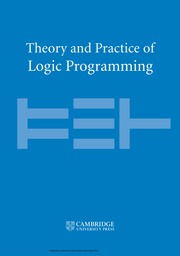Article contents
Handling defeasibilities in action domains
Published online by Cambridge University Press: 13 May 2003
Abstract
Representing defeasibility is an important issue in common sense reasoning. In reasoning about action and change, this issue becomes more difficult because domain and action related defeasible information may conflict with general inertia rules. Furthermore, different types of defeasible information may also interfere with each other during the reasoning. In this paper, we develop a prioritized logic programming approach to handle defeasibilities in reasoning about action. In particular, we propose three action languages ${\cal AT}^{0}$, ${\cal AT}^{1}$, and ${\cal AT}^{2}$ which handle three types of defeasibilities in action domains named defeasible constraints, defeasible observations and actions with defeasible and abnormal effects respectively. Each language with a higher superscript can be viewed as an extension of the language with a lower superscript. These action languages inherit the simple syntax of ${\cal A}$ language but their semantics is developed in terms of transition systems where transition functions are defined based on prioritized logic programs. By illustrating various examples, we show that our approach eventually provides a powerful mechanism to handle various defeasibilities in temporal prediction and postdiction. We also investigate semantic properties of these three action languages and characterize classes of action domains that present more desirable solutions in reasoning about action within the underlying action languages.
Keywords
- Type
- Research Article
- Information
- Copyright
- © 2003 Cambridge University Press
- 1
- Cited by




